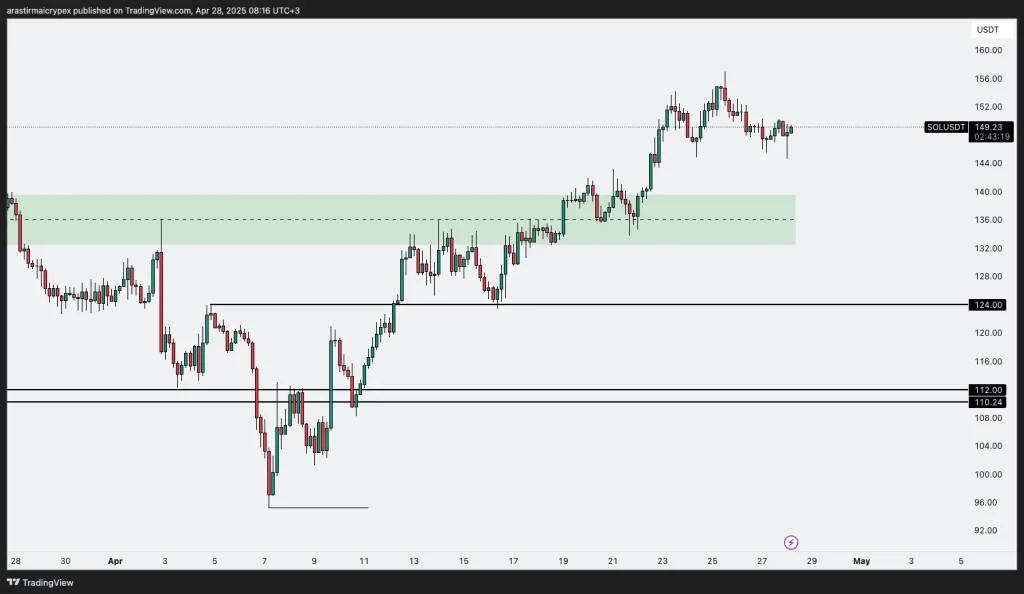SEC Chairman Paul Atkins’ Message of Support for Crypto Assets – ProShares to Launch Three New XRP Futures ETFs on April 30
SEC Chairman Paul Atkins’ Message of Support for Crypto Assets
The new chairman of the U.S. Securities and Exchange Commission (SEC), Paul Atkins, announced in his first public speech on the fourth day of his term that he expects “great benefits” from digital assets. Atkins, who was appointed by President Donald Trump, said that the SEC will cooperate with Congress and market players to create a clearer and more harmonious framework for crypto regulations.
Atkins criticized the previous SEC administration and emphasized that regulatory uncertainties during the Biden era hindered innovation. Atkins, who took a more positive approach in contrast to former Chairman Gary Gensler, drew attention to the potential of crypto assets to reduce costs and reduce risks. The SEC has backed down from some of its tougher moves on crypto since Gensler’s departure and is taking a more open approach to the sector by establishing a new crypto task force.
ProShares to Launch Three New XRP Futures ETFs on April 30
ETF issuer ProShares will launch three new exchange-traded funds (ETFs) offering leveraged and inverse futures to Ripple’s XRP token on April 30. The funds, called Ultra XRP ETF (2x leverage), Short XRP ETF, and Ultra Short XRP ETF (-2x leverage), will provide exposure to the price of XRP via futures without directly holding the asset.
These new products will be the second, third, and fourth XRP ETFs to launch in the U.S., following the Teucrium 2x Long Daily XRP ETF, which was the first XRP ETF to launch in the U.S. The SEC has given its indirect approval, without formally objecting to the funds. ProShares’ spot XRP ETF application is still awaiting approval. This development comes on the heels of CME Group announcing that it will list XRP futures.
Bitwise Registers First US NEAR ETF
Bitwise Asset Management has taken a significant step toward launching the first US ETF (exchange-traded fund) based on NEAR, the native token of the NEAR Protocol. The company has registered a trust entity called “Bitwise NEAR ETF” in the state of Delaware, paving the way for a formal filing with the SEC.
The move reflects the growing interest in digital assets by providing institutional investors with easier and more regulated access to NEAR. Bitwise’s ETF will offer investors exposure to NEAR without having to deal with technical details such as private keys, wallet infrastructure, or custodial services. It will also provide advantages in terms of portfolio management with daily price transparency and asset disclosures.
Stripe Expands to Global Market with New Stablecoin Product
Stripe is preparing to test its new stablecoin payment solution designed for companies outside the US, UK and European Union. The company’s CEO Patrick Collison announced that the product has been planned for nearly a decade and is now open to testing pilot users.
The announcement comes after Stripe received regulatory approval to acquire Bridge, a stablecoin payments platform founded by former Coinbase executives. Stripe’s move is part of its goal of gaining more share of the stablecoin market, which is projected to reach $3.7 trillion by 2030. Stripe was an early entrant into the industry in 2014 when it became the first major payment provider to support Bitcoin payments.
Swiss National Bank Governor Rejects Bitcoin As A Reserve Asset
Despite Switzerland’s growing interest in cryptocurrencies, Swiss National Bank (SNB) Governor Martin Schlegel has opposed including Bitcoin in bank reserves. Schlegel said cryptocurrencies are unsuitable as a long-term store of value, citing Bitcoin’s high volatility, lack of liquidity and security risks.
The statement comes as a public initiative is being tabled in the country that calls for the SNB to add Bitcoin and gold to its reserves. The initiative, which launched in December, aims to collect 100,000 signatures within 18 months, demanding a constitutional amendment. Schlegel, on the other hand, still considers cryptocurrencies a “niche phenomenon” and emphasizes that the Swiss franc maintains its strength and that they are not afraid of competition.
Trump-Backed World Liberty Forms DeFi and Blockchain Partnership with Pakistan
World Liberty Financial (WLFI), backed by the Trump family, has launched a strategic partnership with the Pakistan Crypto Council in the fields of blockchain and DeFi. Under the agreement signed on April 26, regulatory testing grounds will be established in Pakistan, tokenization of assets such as real estate and commodities will be researched, stablecoin applications will be expanded, and DeFi protocols will be developed. The move aims to integrate Pakistan’s young and tech-savvy population into the global digital financial system.
DeFi Development Is On Its Way To Become Solana’s MicroStrategy
DeFi Development Corporation (formerly Janover Inc.) has officially launched its new treasury strategy focused on Solana (SOL) by filing a $1 billion shelf offering with the U.S. Securities and Exchange Commission (SEC). The company plans to use the funding to purchase Solana and run validator nodes on the network. The firm, which currently holds around $48.2 million in SOL assets, has adopted a new treasury policy to make Solana the primary digital asset of its reserves.
DeFi Development aims to turn Solana into an active source of income by not only holding SOL but also contributing to network security through staking. This strategy has led the company to be referred to as “Solana’s MicroStrategy” in the crypto community. The firm had previously provided capital for the SOL purchases through $42 million in convertible debt. The company, whose shares on Nasdaq have changed from JNVR to DFDV, has been gaining momentum under the leadership of former Kraken executives as it moves toward crypto.
El Salvador Continues to Buy Bitcoin
El Salvador continues to buy Bitcoin despite its agreement with the IMF. The country’s treasury acquired seven new Bitcoins (worth about $650,000) in the week of April 27. While IMF Western Hemisphere Director Rodrigo Valdes said El Salvador remains committed to its commitment not to accumulate Bitcoin through the public sector, it is thought that the purchases could be made through non-governmental assets or reclassified routes.
According to experts, this would allow El Salvador to technically remain in compliance with its $1.4 billion loan agreement with the IMF at the end of 2024 while also maintaining its Bitcoin-friendly image. Blockchain consultant Anndy Lian noted that this strategy reflects the tension between crypto innovation and traditional financial policies and offers important lessons for other countries.
Bitcoin Supply on Exchanges at Its Lowest Level Since 2018
A significant development is taking place in the cryptocurrency market: The supply of Bitcoin on exchanges has fallen to its lowest level since 2018. According to CryptoQuant data, as of the end of April 2025, there were only 2.5 million BTC on central exchanges. This is 500,000 BTC less than the amount on exchanges at the end of 2024. This decline is explained by investors withdrawing their assets to their own wallets for long-term storage.
This trend has accelerated especially since 2023. With the entry of institutional investors, the amount of BTC withdrawn from exchanges has reached remarkable levels. Giant firms such as Fidelity are making BTC purchases worth hundreds of millions of dollars and withdrawing these assets to their own custody solutions. This situation brings with it the risk of a potential supply shock in the market, and it is predicted that prices may rise significantly with the increase in demand. Analysts agree that this structure could retest all-time highs for Bitcoin.
———————————————————————————————
BITCOIN (BTC)
BTC is traded at $ 94,130 as of the morning hours with a 0.38% gain in value. Following strong purchases from the 88,500 – 90,500 USDT range in the BTCUSDT parity, the price entered a horizontal consolidation process at the 94,000 USDT levels. The 95,000 – 97,000 USDT region forms a strong supply area. For now, the price is moving sideways without being able to test this region. As long as it stays above 94,000 USDT, the upward momentum can be maintained and the price can move towards the 95,000-97,000 band. However, the loss of 94,000 USDT support could trigger a correction back to 90,000 USDT levels.
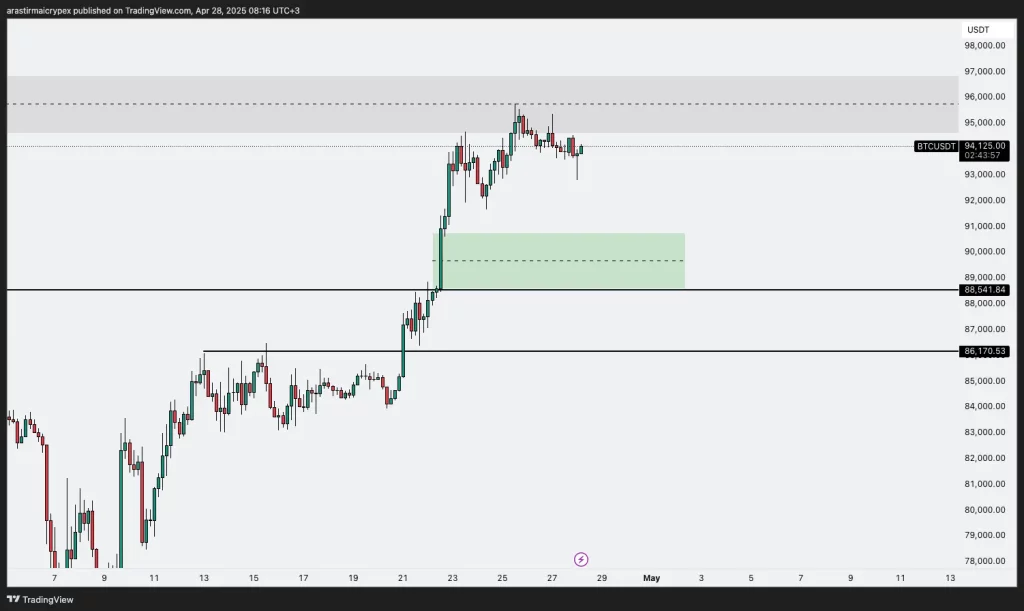
ETHEREUM(ETH)
ETH is priced at $ 1,790 as of the morning hours with a 0.03% loss in value. On the ETHUSDT chart, the price has found support in the 1,768-1,790 USDT band after the previously broken falling trend line. The 1,853 USDT resistance has not been broken yet and the price appears stuck here. As long as it stays above the 1,768 USDT level, the upward trend can be maintained and new peaks above 1,853 USDT can be targeted. However, closing below 1,768 USDT could lead to increased downward pressure and a decline in price towards the 1,700 USDT support area.
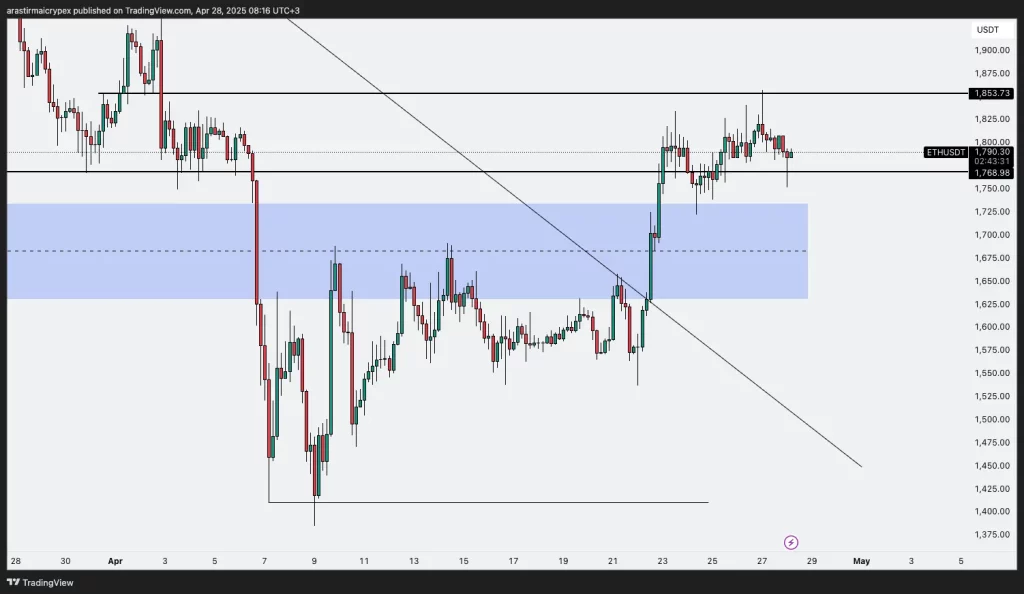
RIPPLE(XRP)
XRP is trading at $ 2.28 as of the morning hours with a 1.29% gain in value. The XRPUSDT parity has risen above the 2.23 USDT level with a strong increase and reached the 2.28-2.30 USDT band. This region is a critical resistance area and is currently working as a region where sellers have stepped in. If the price can stay above this level, the rise can be expected to continue towards targets of 2.40 USDT and above. However, if it falls below the 2.23 USDT support, the price may enter a correction process towards the 2.11 USDT level again.
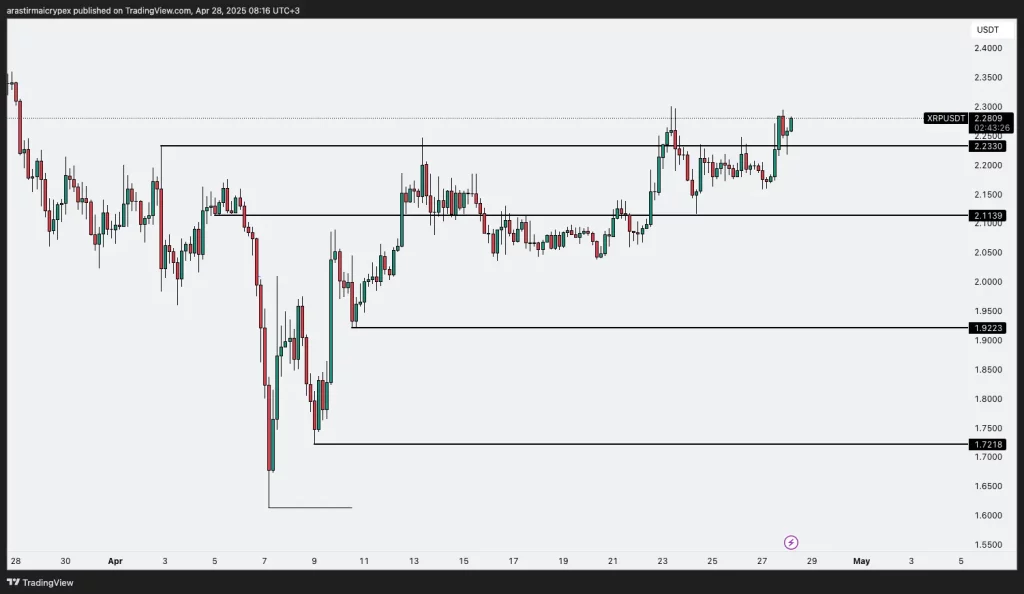
AVALANCHE(AVAX)
AVAX is traded at $ 22.00 as of the morning hours with a 1.15% gain in value. After managing to stay above the 19.95 USDT resistance, the AVAXUSDT parity entered a horizontal pricing at 21.92 USDT levels. However, in the last candle formations, it is observed that buyers are weakening and selling pressure is increasing. If the 21.65 USDT support breaks, the price is likely to pull back towards the 19.95 USDT level and then towards the 17.74 USDT support. In order to maintain the upward momentum, the 23.46 USDT resistance must be broken and sustained above it.
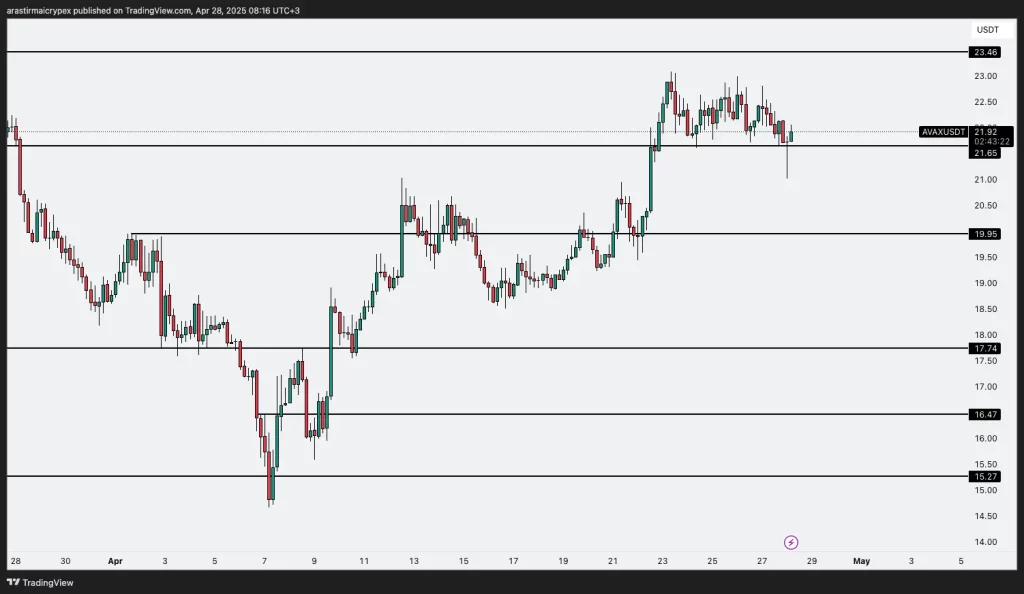
SOLANA(SOL)
SOL is trading at $149.31 with a 0.91% gain as of the morning hours. On the SOLUSDT chart, the price broke out of the liquidity concentration in the 136-140 USDT region and made an upward break. This region is currently working as a strong support area. Although the price encountered resistance at the 152 USDT levels, the general structure is still positive and the upward trend is maintained. If the price continues to stay above the 136-140 zone, there is a potential for a new attack above 152 USDT in the short term. In a contrary scenario, closing below this zone may increase the selling pressure and trigger a correction towards the 124 USDT level.
